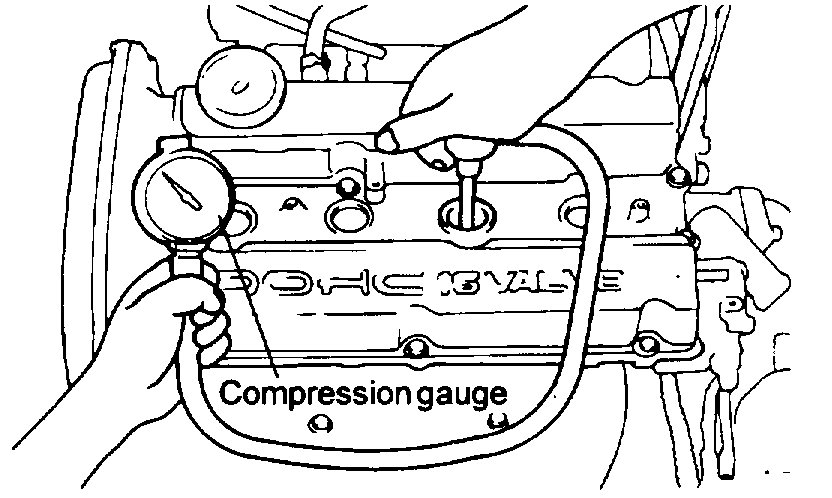Welcome to 2CarPros.
This is an interference engine. Actually, all Hyundai engines are interference engines. Did it jump time prior to belt replacement? If so, you need to check engine compression to see if there was internal damage.
https://www.2carpros.com/articles/how-to-test-engine-compression
______________
Here are the directions for testing specific to your vehicle. Specs are included and pic 1 correlates with the directions.
2000 Hyundai Sonata L4-2.4L
Component Tests and General Diagnostics
Vehicle Powertrain Management Tune-up and Engine Performance Checks Compression Check Testing and Inspection Component Tests and General Diagnostics
COMPONENT TESTS AND GENERAL DIAGNOSTICS
CHECKING COMPRESSION PRESSURE
1. Before checking compression pressure, check the engine oil level. Make sure that the starter motor and battery are in normal operating condition.
2. Start the engine and wait until engine coolant temperature reaches 80 - 95°C (176 - 205°F).
3. Stop the engine and disconnect the spark plug cables.
4. Remove the spark plugs.
5. Crank the engine to remove any foreign material in the cylinders.
pic 1
6. Attach the compression gauge to the spark plug hole.
7. Depress the accelerator pedal to fully open the throttle.
8. Crank the engine and read the gauge.
Limit: 12.5 kg/cm2 (1.23 MPa, 178 psi)
[250 - 400 rpm]
9. Repeat steps from 6 to 8 over all cylinders, making sure that the pressure differential for each of the cylinders is within the specified limit.
Limit: Max. 1.0 kg/cm2 (100 kPa, 14 psi) between cylinders
10. If a cylinder's compression or pressure differential is below the specification, add a small amount of oil through the spark plug hole and repeat steps from 6 to 9.
1) If the addition of oil brings the compression up, it is possible that there is wear between the piston ring and cylinder wall.
2) If compression remains the same, valve seizure, poor valve seating or a compression leak from the cylinder head gasket are all possible causes.
Tightening torque
Spark plug: 20 - 30 Nm (200 - 300 kgf-cm, 15 - 21 ft. lbs.)
++++++++++++++++++++++++++++++++++++++++++++++++++++++++++++
Let me know what you find or if you have other questions.
Take care,
Joe
Image (Click to make bigger)
Friday, August 2nd, 2019 AT 10:17 PM




